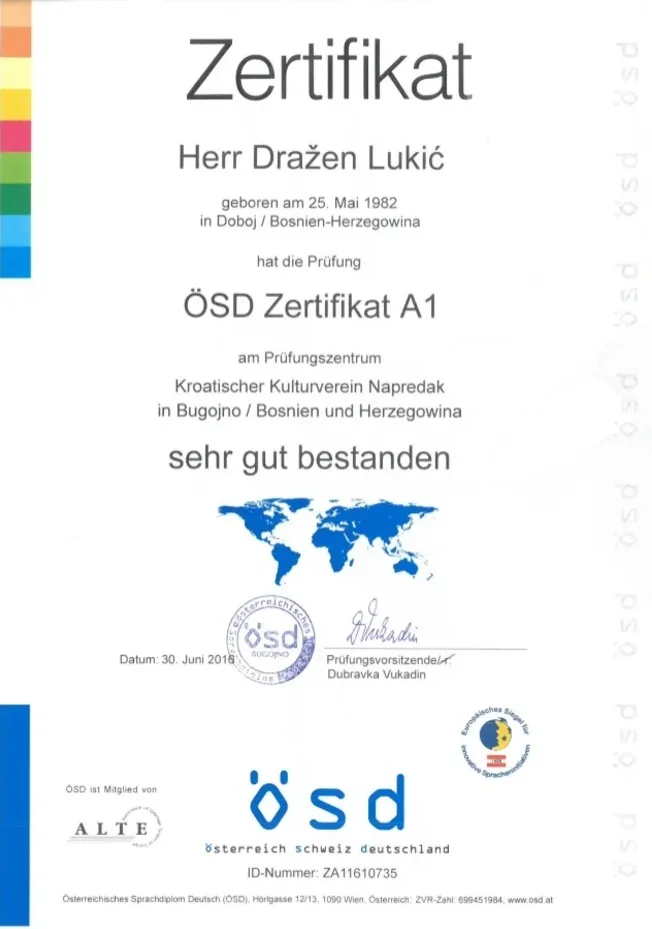Understanding the Austrian Language Test: Importance, Structure, and Preparation
Austria, an attractive nation known for its stunning landscapes, abundant history, and vibrant culture, is also home to a distinct linguistic identity. While German is the official language of Austria, the variations in dialects and subtleties can be rather various from basic German, making language efficiency an important element for immigrants who wish to live, work, or study in the country. One significant action in attaining efficiency in German as spoken in Austria is the Austrian Language Test (ÖSD - Österreichisches Sprachdiplom Deutsch). This post checks out the importance, structure, and preparation methods for the Austrian Language Test, in addition to regularly asked questions, to assist people browse this vital procedure.
Importance of the Austrian Language Test
The Austrian Language Test serves many purposes, each stressing the significance of language proficiency in communication and integration:
Social Integration: Proficiency in the local language promotes better communication and relationship-building, important for personal and expert interactions in Austria.
Academic Opportunities: Non-native German speakers wanting to enlist in Austrian universities must show their language efficiency through the ÖSD, ensuring they can follow coursework efficiently.
Employment Eligibility: Many companies in Austria need proof of language skills, making the ÖSD an essential certification for task hunters.
Residency and Citizenship: For foreigners getting residency or citizenship, evidence of language proficiency is typically a requirement, highlighting the importance of understanding the regional language and culture.

Cultural Appreciation: Learning the language enhances the understanding of Austrian customizeds, traditions, and literature, leading to a deeper appreciation of the nation's cultural landscape.
Structure of the Austrian Language Test
The Austrian Language Test is divided into several levels to examine a person's command of the German language, lined up with the Common European Framework of Reference for Languages (CEFR). The test comprises the following essential elements:
Levels of the Test
A1: Beginner level-- Basic understanding of daily expressions and familiar expressions.
A2: Elementary level-- Ability to interact in basic tasks requiring a direct exchange of details on familiar topics.
B1: Intermediate level-- Understanding of the primary points in clear basic input, including discussions on work, school, and leisure.
B2: Upper-intermediate level-- Ability to interact with fluency and spontaneity while discussing a range of intricate topics.
C1: Advanced level-- Proficiency in understanding a large range of demanding, longer texts, and revealing concepts with complete confidence.
C2: Mastery level-- Near-native proficiency, understanding essentially whatever heard or read and expressing oneself spontaneously.
Exam Structure
The ÖSD normally includes four main parts:
Checking Out Comprehension: Participants check out numerous texts and address concerns to assess their understanding and interpretation skills.
Composing: Candidates write essays, letters, or reports based on prompts to assess their capability to convey ideas clearly and efficiently.
Listening Comprehension: This section includes listening to audio recordings, followed by questions designed to assess listening skills and comprehension.
Speaking: This part involves oral interviews or presentations, where candidates must demonstrate their speaking capabilities in real-life scenarios.
The tests are created to be interesting yet challenging, making sure that candidates can showcase their language capabilities precisely.
Preparation for the Austrian Language Test
Preparing for the Austrian Language Test needs a structured technique to make sure efficiency throughout all four abilities: reading, composing, listening, and speaking. Here are a number of preparation techniques to consider:
1. Enlist in Language Courses
Language Schools: Many language schools in Austria offer courses specifically developed to prepare students for the ÖSD. These courses typically concentrate on the types of materials covered in the test.
Online Classes: Various online platforms provide interactive language lessons, allowing students to study at their own speed.
2. Practice with Past Tests
Prospects can access previous ÖSD evaluation documents or sample tests to familiarize themselves with the question formats and exam structure.
3. Engage in Language Exchanges
Joining language exchange programs or conversation clubs allows candidates to practice speaking with native German speakers and other students, enhancing their self-confidence and fluency.
4. Use Language Learning Apps
Duolingo: Provides interactive language video games and workouts customized to various proficiency levels.
Babbel: Focuses on discussion skills, offering real-life discussions necessary for verbal communication.
5. Immerse in the Language
Listen to German Media: Consuming German music, podcasts, and audiobooks helps improve listening comprehension.
Check Out Literature: Reading German books, newspapers, and magazines exposes learners to different writing styles and vocabulary.
6. Employ a Language Tutor
Working one-on-one with a certified language tutor can assist tailor discovering experiences to focus on individual weak points and strengthen particular abilities.
Regularly Asked sprachtest (FAQs).
Q1: How long does it take to prepare for the Austrian Language Test?
A1: Preparation time varies based on the person's starting efficiency level. Usually, it may take a couple of months of consistent study to prepare for a specific level.
Q2: Is the ÖSD test acknowledged globally?
A2: Yes, the ÖSD test is extensively acknowledged as proof of German language efficiency and is often needed by universities and companies in German-speaking nations worldwide.
Q3: How much does the Austrian Language Test cost?
A3: The cost of the ÖSD differs depending upon the testing center and area. On average, costs vary from EUR150 to EUR300.
Q4: Can I retake the test if I don't pass?
A4: Yes, candidates can retake the ÖSD as lot of times as needed to achieve their preferred efficiency level.
Q5: What resources are best for exam preparation?
A5: Recommended resources include textbooks tailored for ÖSD preparation, online courses, language apps, past exam papers, and regional language workshops.
Conclusion.
The Austrian Language Test plays a crucial role in assisting non-native speakers to incorporate smoothly into Austrian society. Accomplishing competence in the language not only opens doors to academic and expert chances but likewise cultivates a deeper connection with the country's rich cultural heritage. With the ideal resources and method, mastering the nuances of the Austrian German dialect ends up being a rewarding journey towards successful combination.
